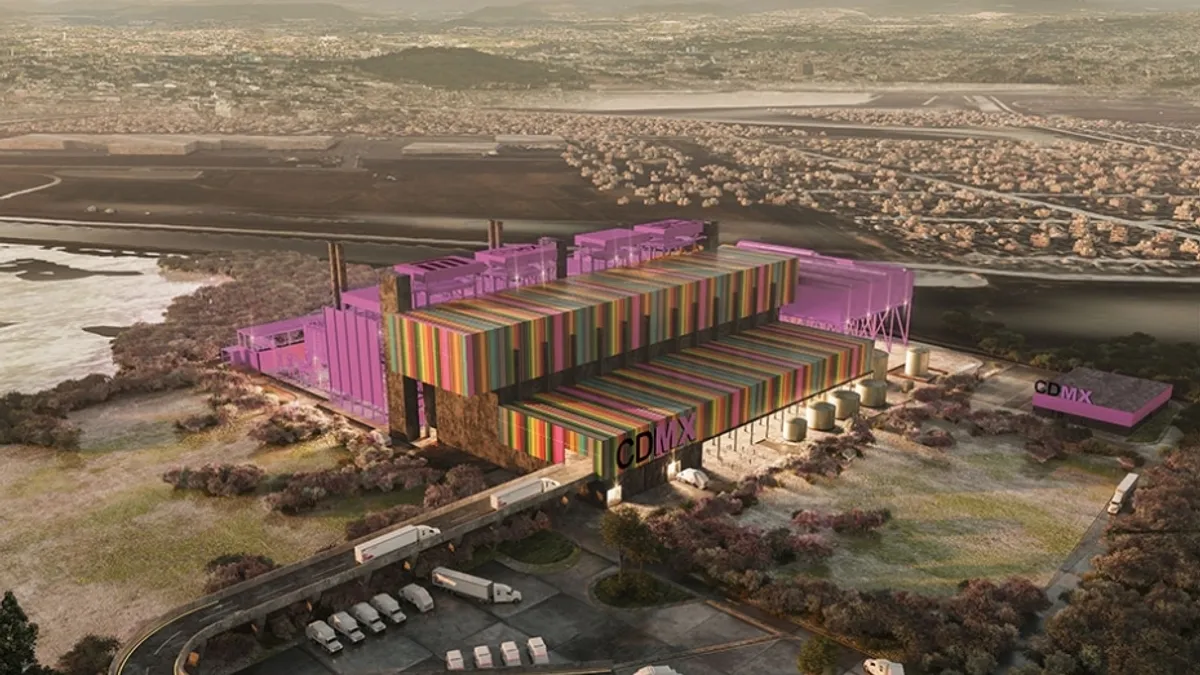Dive Brief:
- Veolia recently announced it has been selected to design, build and operate a major waste-to-energy facility in Mexico City. The 30-year maintenance and operation contract for this facility is worth €886 million (approx. $993 million USD).
- The facility will have capacity to process up to 1.6 million metric tons of waste per year, about one-third of Mexico City's overall household waste generation. This will produce 965,000 MWh of electricity to be used by the Mexico City Metro system.
- The company expects to begin construction this year and have the facility operational by 2020. According to Veolia this will be the first WTE facility of its kind in Latin America and one of the largest in the world.
Dive Insight:
Managing the estimated 13,000 metric tons of waste created by Mexico City's 10 million residents is a daunting task. About two-thirds of this material is landfilled, though options have become more limited since the notorious Bordo Poniente site was closed in 2011 without a clear alternative disposal plan.
Veolia already offers waste collection and treatment services in 20 Mexican cities, so it is well-acquainted with the local market. This project has been described as a demonstration of what their WTE experience from other countries can do for Mexico. In its release, Veolia described WTE as having "huge potential for development" in Latin America.
Construction of new WTE combustion facilities is currently a tough sell in the U.S., where the sentiment among environmental groups and some municipalities is trending more toward limiting their use. This has caused companies such as Covanta to expand their specialized waste operations and look overseas to the U.K., Australia and some Southeast Asian island nations for new opportunities. Meanwhile, population growth has driven a major WTE push in countries such as China, though some of those projects have also begun running into their own opposition.












